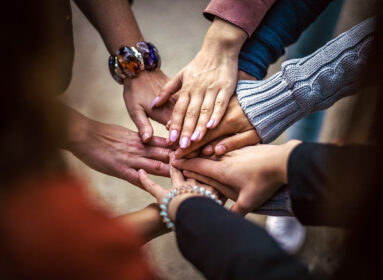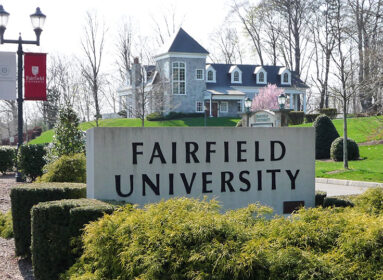
By Cindy Mindell
A traveler seeking to taste Jewish life in Poland today will experience a sort of double vision. Alongside the hopeful realities of Warsaw – the new POLIN Museum of the History of Polish Jews, the just-opened Hillel Warsaw – stand bizarre “reenactments” and stereotypes of Jewish life where once-thriving Jewish communities were wiped out during the Holocaust.
Author and scholar Shelley Salamensky will explore these “Diaspora Disneys,” the subject and title of her forthcoming book, on Tuesday, April 26 at UConn Stamford, hosted by the school’s Center for Judaic and Middle Eastern Studies.
Writing in the New York Review of Books in 2011, Salamensky describes the impetus behind her first trip to the annual Jewish Culture Festival in Kraków, which sparked her interest in “reenactments” of Jewish life and culture in places where once-thriving Jewish communities no longer exist:
“Cafés, I was told, served jellied carp with raisins. Klezmer tunes bounced down the cobbled streets. Prewar shop signs had reappeared, flanking a bustling square as if its Jews had never left. The cooks and klezmorim, I later learned, were nearly all non-Jews, the crowds made up of tourists, the façades only that. Auschwitz, a mere hour away, remained a brutal warning against rosy nostalgia or frivolity. Still, I needed to see all this for myself. I went.”
Salamensky’s trips to the Festival her to other cities in Europe and Asia where Jewish life is being recovered and reenacted: Łódzź, Berlin, Vilnius, Lviv, Birobidzhan, among other locations.
“There are certainly two Polands,” says Salamensky. “In Warsaw, Krakow, and to some extent Łódz, Poland’s Jewish heritage is celebrated, and remaining Jews live openly. In lesser cities and poor rural areas, the opposite can be the case. The figure of the Jew – though few Poles have ever knowingly met one – is often held as something negative indeed. Antisemitism, in that context, might be the wrong word. It’s simply ignorance and fear of others and of anyone diverging from strict Roman Catholic doctrine. Other minorities face prejudice as well, and women’s and gay rights are under fire. The current government is extremely right-wing.
And there are some terribly toxic voices speaking through the clergy and media to the people.”
“Nearly all recent Holocaust memorials, Jewish museums, and educative efforts share some immersive, experiential element, like the passageway at the POLIN museum that re-creates a prewar street to give visitors a sense of the bustling life and community that was lost,” she says. “I think that’s crucial, as history fades: new generations need not only to be informed, but to have a chance to feel their way through times and places distant from them.”
Only time will tell as to whether Jewish life takes root again in a country once known for its diversity.
“Increasing numbers of Poles – mostly, though not all, young – are opening up, asking questions, even volunteering to clean up destroyed Jewish buildings and cemeteries,” Salemensky says. “Those movements are largely prompted by media coverage of Jewish heritage activities in big cities. In a generation, everything might turn around.”
“Diaspora Disneys: Re-enactments of Pre-Holocaust Jewish Life in Poland Today” with Dr. Shelley Salamensky: Tuesday, April 26, 7 p.m., UConn Stamford, MPR Room 1.08, 1 University Place, Stamford For information: (203) 251-9525 / stamfordcjmes@uconn.edu








 Southern New England Jewish Ledger
Southern New England Jewish Ledger









